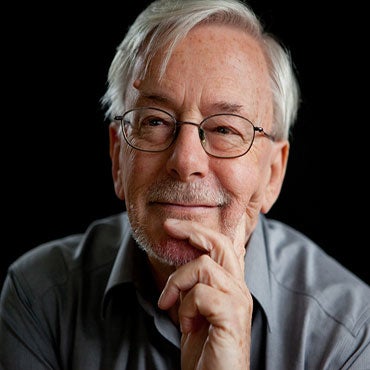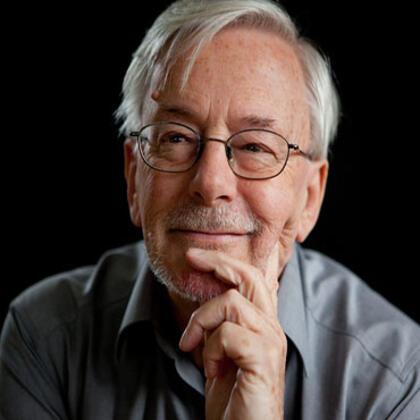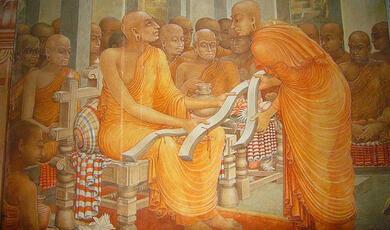The formation of Christian doctrine
Share
- Details
- Transcript
- Audio
- Downloads
- Extra Reading
How were the doctrines of the Incarnation and the Trinity formed? Are such doctrines a takeover of the primitive faith by Greek philosophy? Or are they part of the original teachings of the church?
Download Transcript
THE FORMATION OF CHRISTIAN DOCTRINE
Professor Keith Ward
After the writing of the New Testament documents, we see the church continuing to develop its thinking about Jesus and the revelation of God in and through Jesus. It did so with the aid of concepts that were not characteristic of the New Testament, and that were drawn from Greek philosophy. Some of the more traditional Bishops tended to oppose such ‘new-fangled’ ideas, on the grounds that they were not part of the original revelation. They were right to think that these were new ideas, with which Jesus or the Apostles were not familiar. They were certainly not part of the teaching of Jesus. But the traditionalists were wrong in failing to see that by the time the New Testament was written, the church’s teachings had already changed dramatically from the original teaching of Jesus. The new concepts simply illustrated the creative drive of the church towards wider and deeper understandings of the revelation of God in Jesus. Greek philosophy enabled the church to find a new perspective on those originating events, which would illuminate their significance for world history and the human understanding of the divine. Such a drive to fuller understanding is inevitable, and the church may fairly claim that the inspiration of the Holy Spirit will not totally fail to guide its thinking on such matters.
On the whole, we get an impression of quite a wide range of creative interpretations of the Christian faith from the writings that do remain and are accessible to us. There are many good books on the development of Christian doctrine. A standard work is Early Christian Doctrines, by J. N. D. Kelly (A and C Black, 1958). From Nicaea to Chalcedon, by Frances Young (SCM, 1983) is an excellent guide. For something shorter and very readable, I would recommend ‘The History of Christian Thought’, by Jonathan Hill (Lion Publishing, Oxford, 2003). What I want to do is show how what came to be called Christian Orthodoxy developed in an understandable yet highly imaginative and creative way from the forms of faith in Jesus that had preceded it.
The first of the group of writers known as the ‘Church Fathers’ was Justin Martyr, born in about 100 CE. He explicitly used the works of Greek philosophers to develop the Logos theology of John’s gospel. He depicted the Logos as the wisdom, intellect, thought or speech of God. It came to exist when God thought or spoke, as a sort of emanation of the divine being, rather as light emanates from the sun. How many emanations from the divine being there were, and exactly how they related to that being, is unclear, though the Son and the Spirit are expressly named. The idea of the logos as a sort of ‘second God’, or an emanation of God, was to be a major theme of Patristic thought.
Irenaeus, later in the second century, further develops the theme. He sees the Logos as becoming corruptible and mortal in the person of Jesus, in order that humans can be ‘joined to incorruptibility and immortality’. The incarnation begins the process of human divinisation, by which humans, made in the divine image, pass into God in an unending journey towards the divine likeness.
What is most striking in these writings is the way interest has moved from the historical Jesus to the nature of the eternal God, and to the general relation of God to creation through the mediation of the Logos. Messianic Judaism has been left behind, and Jesus becomes the bearer of the eternal Word for the world, leading humanity from the fading world of time to unity with the eternal divine.
All this belongs to the same thought world as Gnosticism, which developed elaborate theories of emanations from the divine ‘Fulness’, and of salvation as the return of the sparks of the divine that had become trapped in human bodies out of the darkness of matter to the pure light of the Fulness of God. Gnostic thought was related to what became Christian orthodoxy in a complex way, but it did affect many Christian formulations of doctrine.
Christians rejected the general Gnostic belief that matter was intrinsically evil, something to be liberated from, not celebrated, a view that reflects Plato’s statement that the body (soma) is the tomb (sema) of the soul. Yet the growing Christian faith was not untouched by such thoughts. There were those who taught that Jesus never really suffered, and never even ate or drank. He just appeared to do so, whereas in fact he was totally liberated from material existence. He was not truly a man.
For most early Christians, however, such a belief misses the point of the incarnation, which is that God sanctifies matter by taking material form. Any true liberation must be a liberation of matter as well as spirit, and the risen Lord continues to have some sort of material form, and is not pure disembodied Spirit.
The neo-Platonic interest in the processions and emanations of the divine being into the world of time, and the return of the temporal into God, exerted a great influence on the churches. John’s gospel, which especially in its Prologue expresses an embryonic form of such an interest, began to be taken as an authentic record of the historical Jesus. Jesus began to be understood as one who knew himself to be the incarnation of the Logos,the omnipotent and omniscient heavenly Son of God. He was fully conscious of his own pre-existence with the Father, able to raise himself from death by his own power (as opposed to being raised, as a man, from death by God). His miracles were no longer wonders performed by God in response to the prayers of a faithful prophet. They were proofs that God in person was at work in the world.
The church did not, however, accept that Jesus was the omnipotent and omniscient God who only appeared to be a man. In what became a definitive statement, the Council of Chalcedon in 451 CE promulgated the view that Jesus was ‘fully man’ as well as ‘fully God’, without claiming to explain how this could be. It is important to note that most Christians insisted that Jesus was a real man, not some sort of illusion or apparition of a man.
Much Christian thinking has not seriously explored the implications of the statement that Jesus was really a member of the species homo sapiens. It means that the knowledge and power of Jesus was that possible for and proper to human beings in general. Omniscience is not possible for a human being. We must come to know things through the senses, and by learning them from others. Our knowledge will be bounded by the limitations of our culture. For instance, no Palestinian Jew could possibly have known the Theory of Relativity, or the solution of Fermat’s last theorem. Jesus would in general have believed what people of his culture believed, and that would have included many mistaken views – for example, about the nature and age of the earth.
We might expect that, because of his unique closeness to God, Jesus would have had a capacity of insight and wisdom far beyond that of most humans, but it would not have been inhuman. It would rather have been the moral and spiritual perfection of humanity – what a human being would know and believe if they were interpenetrated in indissoluble union by the divine. We cannot be sure what this would be like, but it is highly likely that such union would not remove all errors of fact or culturally limited opinion, though it might well ensure that Jesus was preserved from error in any matters that concerned God’s will to reveal and realise the divine purpose of human redemption in him. We might say that he was omniscient in all things concerning human salvation (the fulfilment of human personality in unity with God). But he was not omniscient about, for instance, the structure of DNA.
Similarly, no human being can be omnipotent. Human powers are governed by our genetic inheritance (the Virgin Birth is irrelevant to this, since Jesus inherited a full genome from Mary even if he had no human father). No human can fly or lift a mountain or rise from death by his own power. God can work through a human being, and God could protect such a being miraculously or raise him from the dead if God so willed. But Jesus, as human, would not be or believe that he was omnipotent. He might well, however, feel himself to be wholly dependent upon the omnipotent God, with whom he was united in the most intimate possible way – and the synoptic gospels seem to depict him in that way.
Jesus had a human consciousness, human powers and human knowledge. These could be perfected, but not obliterated, by his union with the divine.
In what, then, did such a union of divine and human consist? It was Tertullian, writing in Latin in the second century CE, who invented the terms that have since become standard in Christian theology. He said that Jesus was two substances (substantia) in one person (persona). Jesus is both God and man, having a divine nature and a human nature united in one person (the word ‘nature’ was later adopted by the council of Chalcedon as a clearer term than ‘substance’, so that Jesus was said to be two natures in one person).
Tertullian was also the first writer to use the term ‘Trinity’ of God, saying that God was three persons – Father, Son and Spirit – in one substance. From this it follows that the one person of Christ is identical with the second person of the Trinity. It is easy then to conclude that Christ is a divine person who adds a human nature to his properly divine nature, or ‘assumes’ a human nature to the divine person, without really being a human person.
In other words, Jesus has a human nature, but is not strictly speaking a human person. He is a divine person with a human nature. And that divine person is one of three who together constitute the substance, the being, of God.
This is a major change from the Jesus of the synoptic gospels, who is presented as a human person with unique and divinely given authority and powers, but who is expressly said to be limited in knowledge and power, and who insists, with orthodox Judaism, that ‘the Lord your God is one Lord’. It is not a change in the sense of renouncing or contradicting what Mark’s gospel says. But what it says about God and Jesus would have been quite unknown to Mark – and, if Mark is right, to Jesus also.
Tertullian was therefore mistaken when he said that ‘all doctrine which agrees with the apostolic churches…must be considered true, as undoubtedly containing what those churches received from the Apostles, the Apostles from Christ, Christ from God’ (Against the Heretics, ch. 21). Tertullian’s own doctrine of the Trinity and of the person of Jesus was original with him, and was not derived from the Apostles or from Jesus.
That does not mean Tertullian’s doctrine is false. It just means Jesus never thought of it, and neither did the apostles. Tertullian is taking John’s gospel as historically accurate, whereas it was itself a later interpretation of the person of Jesus.
The question Tertullian is asking, and that any reflective Christian must ask, is: given that the gospel records are in general accurate in portraying Jesus’ ministry, death and resurrection, what must we say that Jesus was and now is, in relation to God?
The question is quite proper. But what Tertullian did not see is that John’s gospel is already an early attempt to answer that question, and even the synoptic gospels provide reflective interpretations of the person of Jesus. So what we should really be asking is, ‘Given that the gospels are interpretations of Jesus, and we cannot with any objective certainty get back beyond them, what should we now say about Jesus in relation to the disclosure of God we have received through him?’
Would we agree with Tertullian? My own view is that we could nearly agree with him, but not quite. One reason for not quite agreeing with him is that we now believe, with good reason, that Mark is closest to the historical Jesus, and John is quite far away. So it looks as though we should say that Jesus is a human person who has a unique closeness to God, a unique authority to mediate God’s power and wisdom, and a unique vocation to bring God close to those who are prepared to encounter him in and through Jesus. We can say that he is a human person uniquely united to, and in that sense one with, the divine. The point about stressing this is that he will be seen as a finite personality with his own autonomy, his own form of knowing and willing and experiencing. He will not be imagined as the infinite God, somehow squashed up into a human mind and body, or adding such a mind and body to his already omniscient power.
Yet what of John’s gospel, and Thomas’ reported exclamation, ‘My Lord and my God’? Jesus was worshipped in the early church, and calling him ‘Lord’ is equivalent to calling him God. Christians believe that Jesus mediates God in such a perfect way, even if that mediation is limited to what is possible for a human person, that he can properly be worshipped as the personal medium of God’s action. We might admire a perfect person. But if that person perfectly exemplifies and mediates God’s power and wisdom, it may be proper to treat him as God. What Jesus does is what God wills to do in the human world, for Jesus’ human will is completely devoted and transparent to the divine will. Moreover, God wills that Jesus should be the image and model of the divine for the human world.
It is rather as if an ambassador was treated as the ruler he or she represents. But it is much more than that, for in Jesus’ case he really is the medium through whom God directly acts, and acts in such a way as to disclose the divine nature and open a new way of relating to God for human beings.
So the gospels refer to Jesus, not as ‘God’ per se, but as ‘Son of God’, the human person who mediates God’s decisive act of self-revelation and human liberation. And Jesus calls himself ‘Son of man’, the paradigm human being, made perfect by his complete union with the divine. In my view, these insights are well preserved by saying that Jesus is a human person perfected by the divine presence and power, and designated by God as the image and mediator of that presence and power to human beings. Human and divine are united uniquely in Jesus, but it can be misleading to say that human nature is ‘possessed’ by a divine person. It misleads if it leads people to think that Jesus is really omnipotent and omniscient, for example, but somehow conceals the fact while walking around Galilee. But it does not have to mislead, and we need to remember that the terms ‘substance’ and ‘person’ have changed their meaning quite a lot since early Christian times, so we must not use them in their modern sense. Nevertheless, as long as we are aware of the danger, the language of substances and persons can still be used in thinking about the divine-human union in Jesus.
These matters are exceedingly difficult to formulate precisely, and in the first five centuries the church argued repeatedly over whether Jesus had a human soul or will, whether he was of the same substance as God or not, whether he was less than or equal to the Father, and how his human properties related to the divine properties of the eternal Word which ‘became flesh’, according to John’s gospel.
The striking thing about these arguments is that, while they constantly refer to the gospels, usually taken as literal accounts of the life of Jesus, they are really about highly abstract philosophical themes of the nature of God and the eternal Word or Son of God – something quite foreign to the synoptic gospels.
There is no question, for the gospels, that Jesus exemplifies a union of human and divine, and that he does so in a unique way, since he is designated as Messiah, the self-disclosure of God and the one who opens up a new way of union with God for all human beings. So there is a sense in which the church is not issuing a new doctrine, not previously thought of. Nevertheless, the way it is formulated, as a union of two natures in one person, is new, and expresses a development in Christian thinking about Jesus. As I have implied, there may need to be further reformulations of our understanding of Jesus’ relation to God, if our philosophical framework and understanding changes. My own suggestion, which probably needs refinement in many ways, is that we could think of incarnation is an original and indissoluble union of divine and human willing and experiencing, which is brought about by a particular act of God in human history, but which leaves the human subject creatively free as well as necessarily united in will to God.
Even for the most traditional Christian, the process of developing a doctrine of incarnation by no means ends with Tertullian. Whereas Tertullian clearly taught that Christ was less than the Father, the Council of Chalcedon insisted that Christ was co-equal with the Father. Tertullian speaks of the persons of the Trinity as differing in ‘degree, form and appearance’, and that terminology too was to be quarrelled over and redefined in the fourth and fifth centuries.
The point is that in the first five centuries of its existence, the church sought to develop a new terminology that would help it to understand more fully what it believed, that God had revealed the divine nature and acted for human liberation in the person of Jesus. This new terminology was accepted only after many arguments, some of them regrettably vicious, and it is now found in the classical Christian creeds, especially the so-called Athanasian and Nicene creeds.
I do not suppose for a minute that either Jesus or any of the apostles could ever have imagined the Nicene creed, or the later more elaborate definition of Christ’s nature at Chalcedon. That does not mean the creed is false. It means that it does not come from Jesus and the apostles – even though the Council of Chalcedon quaintly claimed that the doctrine that Christ was two natures in one person was as ‘the Lord Jesus Christ himself taught us’.
If Jesus ever had taught that, it took the church over 400 years to discover it, and even then many fervent disciples continued to dispute it. It is nowhere in the New Testament, pious reading of which produced as many different theories as it is possible to imagine, and possibly even more. It is the creation of the fifth century church, concluding (or trying to conclude) centuries of disputation. It is to be judged on how adequately it enables us to understand what God has done for humanity in the person of Jesus.
Patristic thought understands the work of God in Jesus as the establishment of a union of divine and human. All that is human, and that suffers by its human estrangement from God, is to be healed by being united with or taken into God. If anything human is not so divinised, it remains estranged from God, ‘unsaved’. In the person of Jesus, God takes into the divine life all that is essentially human. Athanasius, following Irenaeus, famously said, ‘He became man, that we might become God’ (De Incarnatione 54).
The first seven ecumenical councils of the church can be seen as successive attempts to formulate and safeguard this principle against views that could undermine it.
· NICEA, in 325, asserted that the Word was ‘begotten, not made’, and was of the same substance as the Father – against those who held that Christ was created.
This doctrine was confirmed at · CONSTANTINOPLE in 381, and was enshrined in what came to be called the Nicene Creed. That council also stated that the Holy Spirit was fully divine, against those who held the Spirit to be simply a power sent by and dependent upon God. This is when the doctrine of the Trinity was officially formulated.
· EPHESUS, 431, condemned the claim of Nestorius that Mary should not be called ‘Mother of God’, but only of the human person of Jesus. It thereby insisted that in Jesus, divine and human were truly united in one personal reality.
· CHALCEDON, 451, issued the classical definition of this divine-human unity by saying that Jesus Christ was two natures, divine and human, united in one person or substantial and indivisible union.
· CONSTANTINOPLE, 553, added further condemnations of those who divided Christ into two persons, or separate substances.
· CONSTANTINOPLE 680 affirmed that Christ had a real human will and subject of action, against those who held that Jesus only had a divine will and subjectivity.
This series of Councils ended with
· NICEA 787, which asserted that icons could legitimately be reverenced, thus seeking to defend the principle that the infinite God was truly known in the finite and material form of Jesus.
12. These seven great Councils are accepted by the Orthodox churches and the first six by most Anglicans as the definitive councils of the undivided church.
The conciliar definitions can be seen as defensive formulations, condemning what they felt to be inadequate views of the person of Jesus, and insisting that in Jesus there was a real divine-human unity. This unity came to be by pure divine initiative, and was the foundation of the hope that all human life, and perhaps all creation, could in time be similarly united to God by the Spirit of Christ.
Jesus’ call to wait for the coming of the kingdom in Jerusalem was thus re-thought over the first few hundred years of Christian history as the church’s call to be united to God through entering into the sacramental life of the church, through which the Spirit slowly transforms human lives into the divine likeness.
It seems to me reasonable to regard this as an authentic development of the Christian gospel, bringing out the spiritual depth and breadth of Jesus’ message of God’s redeeming and unitive love (love that liberates from evil and unites to the divine life), which was present in his own person. But it certainly marks a major conceptual shift from Messianic Judaism, through John’s embryonic theology of the incarnate logos, and Paul’s early fervent expectation of the return of the Lord and his later death-and-resurrection spirituality, to a sacramental path of union with the divine through the inner transforming action of the Spirit of Christ.
This is not, as Harnack thought, the loss of an early gospel of the fellowship of all people under God, and its replacement by a Hellenistic mystery-cult of divine emanations into matter and the return of the material into a world of pure spirit. So far as we can tell, there was no such early gospel. The person of Jesus was central to the earliest gospel records, and the seeds of a theology of divine incarnation and human apotheosis are present already in John and Paul, and make sense of many of the cryptic teachings of Jesus about the kingdom in the synoptic gospels.
The major conceptual change of Patristic thought is to take the concepts of a basically Platonic philosophy, and use them to interpret the act of God in Jesus. It is not that such Hellenism subjected primitive Christianity to an alien thought world. On the contrary, it was Platonism that was modified radically by the Christian belief that the Supreme Good was not just an unchanging perfection that the world imperfectly imitates, and that inspires us to renounce the world entirely in our pursuit of it. Rather the Good had entered dynamically into the world in the person of Jesus and in the Spirit to assume an estranged world into the divine life, and thereby make the material realm a sacrament of eternity.
Some traditional Christians take the definitions of the first six or seven ecumenical councils as inerrant and final definitions of Christian faith, and the thought of the theologians they ratified as sufficient for all future Christian history. It might, however, seem rather odd that the process of Christian thought should be so innovative for five or six hundred years, and then that all innovation should cease. And there is at least one major issue that might lead to the thought that innovation needs to continue.
One of the chief influences of Platonism was that God, the supreme Good, was generally conceived as immutable and impassible. Being perfect, God could not change, and divine perfection could not be affected by the sufferings and imperfections of the world. This creates major difficulties for any doctrine of incarnation, and especially for a doctrine that holds the eternal Word to be the only true subject of Jesus’ acts and experiences.
John’s gospel says that ‘the Word became flesh’ (John 1, 14). The Orthodox theologians did not really accept this, despite their proclaimed faithfulness to Scripture, for they held that the Word, being changeless, did not and could not become anything. Rather, they said, the changeless Word assumed a human body and soul to union with itself. This union is not after all (as I have so far construed it) like a union of two subjects, such that an infinite subject acts and experiences in and through a finite subject. The Word cannot be affected by anything that happens in the world, so it cannot receive sensory experiences or act in response to them.
The union of divine and human in Jesus, for Patristic writers, is a union between a totally changeless Word and an acting and suffering human agent. The Word cannot even ‘add’ finite experiences to its knowledge, since nothing can be added to a changeless being. What is meant by ‘union’ is now almost wholly mysterious. How can a changing human agent be one with a changeless infinite being?
This will have to be a unique and sui generis sort of union. It makes Chalcedonian orthodoxy an assertion of union between divine and human, without giving any idea of what the union could consist in. Perhaps that meets my demand for a cautious and rather agnostic theology rather well. On the other hand, it may suggest that the Platonic notion of God as immutable and impassible may need to be modified by the Christian belief that ‘God was in Christ reconciling the world to himself’.
We might well think that Christian faith calls for further re-thinking of the idea of God beyond the Patristic period, if it is to be adequate to belief in an incarnate and suffering God. Nicea and Chalcedon produced statements about the person of Christ that most (not all) subsequent Christians have found to define the limits of an adequate idea of the incarnation of God in Jesus. But many more recent theologians have thought that the Platonic idea of a totally changeless God is not really adequate to the Christian perception of a God who becomes incarnate and who suffers for the sake of humanity. A process of further re-thinking about God is positively mandated by the puzzles the ecumenical councils leave unresolved.
© Professor Keith Ward, Gresham College, 6 December 2005
This event was on Tue, 06 Dec 2005
Support Gresham
Gresham College has offered an outstanding education to the public free of charge for over 400 years. Today, Gresham plays an important role in fostering a love of learning and a greater understanding of ourselves and the world around us. Your donation will help to widen our reach and to broaden our audience, allowing more people to benefit from a high-quality education from some of the brightest minds.


 Login
Login







